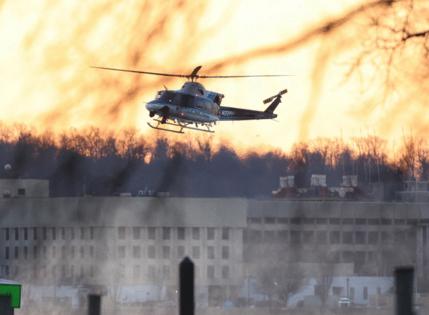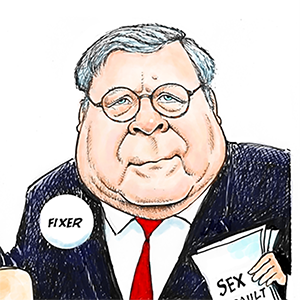'Least safe it has ever been,' witness says of Reagan airspace at NTSB hearing
Published in News & Features
WASHINGTON — WASHINGTON — A witness criticized the safety of the airspace around Ronald Reagan National Airport since a mid-air crash in January, as National Transportation Safety Board officials examined whether the air traffic control tower at the airport was ill-equipped to handle the area’s heavy congestion.
“The airspace system, since 1986 — the helicopter routes — were very successful. Obviously, that success ended quite tragically on January 29th,” Rick Dressler, the aviation site manager for medical services company Metro Aviation, said. “Today, the airspace is the least safe it has ever been, thanks to the changes that have been implemented after January 29th.”
Witnesses for the Federal Aviation Administration and the U.S. Army contradicted Dressler’s claim.
“Absolutely, it’s safe to fly in,” Nick Fuller, the acting deputy chief operations officer for the FAA, said. “The controllers at DCA are responsible, well-trained, and I would have no problem leaving out on a flight in or out of that airport on any given day.”
The hearing focused on the state of the DCA air traffic control tower before and after the accident. Witnesses on the panel described a “we just make it work” mentality at the tower as NTSB officials questioned whether the airport had adequate manpower and systems in place to safely manage air traffic.
Persistent staffing struggles at the tower often led to more senior staff taking on additional responsibilities, according to one witness, James Jarvis, who described the staffing levels at DCA as “not necessarily healthy.”
“They had a couple support staff folks at one point,” Jarvis, an air traffic control specialist with Leidos, a company the FAA contracted to help modernize the National Airspace System. “One, I think, retired. Another one was relocated. And then they went without any staff specialists for approximately three years. Those duties fell to the operations manager and a support manager as well as the air traffic manager. And that was a concern of mine. I brought that to many, many (peoples’) attention every opportunity I had. And at one point, I was told to quit bringing it up.”
Operators at the airport use unique means to create space between aircraft on a day-to-day basis, Bryan Lehman, a witness for the FAA, said.
“These are nonstandard air traffic maneuvers that we do on a daily basis to make it work,” Lehman said. “We take pride in it. But I will say that, at a certain point, it’s too much.”
It wasn’t the first time Dressler had disagreed with other witness statements about flight standards around Reagan National Airport. He had been a consistent critic during the hearing of how flight operations are conducted in the D.C. airspace, including critiques of how military aircraft treat altitude requirements as relative, rather than concrete, guidelines.
The hearing follows a six-month investigation by the NTSB into the mid-air collision between a PSA Airlines passenger jet and a U.S. Army UH-60L Black Hawk that killed 67 people on Jan. 29.
On Wednesday, NTSB officials said that the helicopter was flying higher than it was supposed to be when it collided with the passenger jet. Data indicated that the Black Hawk pilots may have been misled by onboard instruments into believing that the aircraft was lower than it actually was.
While the airport tower has struggled with staffing shortages, it did meet the minimum number of staffers on Jan. 29, with seven staffers on site, according to Clark Allen, a witness for the FAA.
DCA’s implementation of the National Training Initiative (NTI), a program to increase on-the-job hours for staff being developed as air traffic controllers, also raised questions.
The initiative has expectations that trainees meet a certain number of training hours. The hourly goals are not mandatory requirements. But interviews with staff revealed the Washington district went beyond the NTI’s listed expectations and didn’t accept impediments to meeting the hours. Senior staff pressured trainees to meet or exceed the NTI’s goals, even if they had to make up training hours that they had missed due to permitted leave.
The added strain caused some trainees and training instructors — including controllers who had been certified at other towers — to withdraw from the Washington facilities.
Some drama unfolded as the hearing broke for lunch. NTSB Chairwoman Jennifer Homendy said that she and members of the audience saw a supervisor elbow one of the FAA employees mid-testimony earlier in the hearing. The employee stopped speaking after it happened. Homendy said she would be changing the witnesses’ assigned seats.
“I’m not gonna put up with that,” Homendy said.
When the hearing reconvened, Fuller had been moved to the other end of the witness table.
_______
©2025 Baltimore Sun. Visit baltimoresun.com. Distributed by Tribune Content Agency, LLC.







Comments